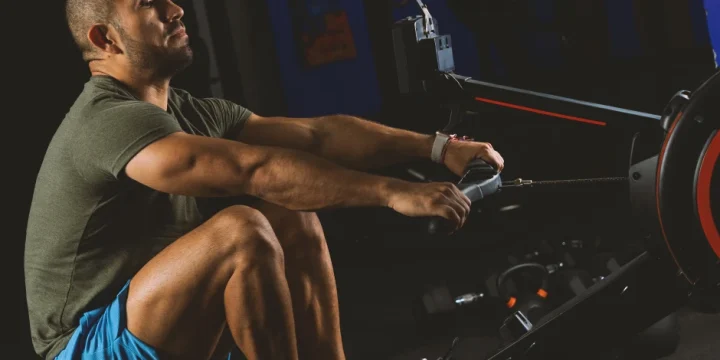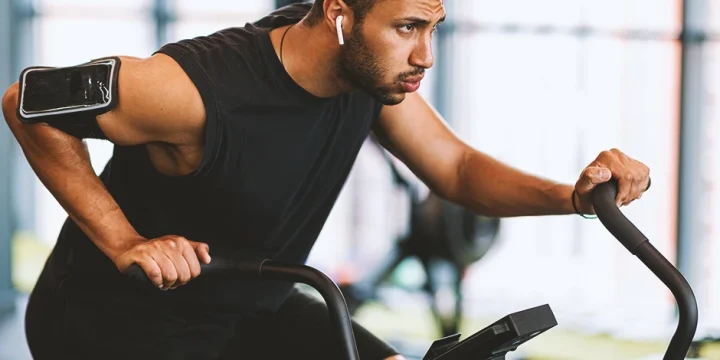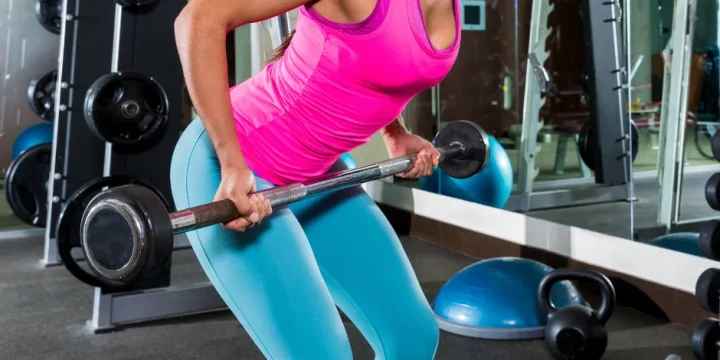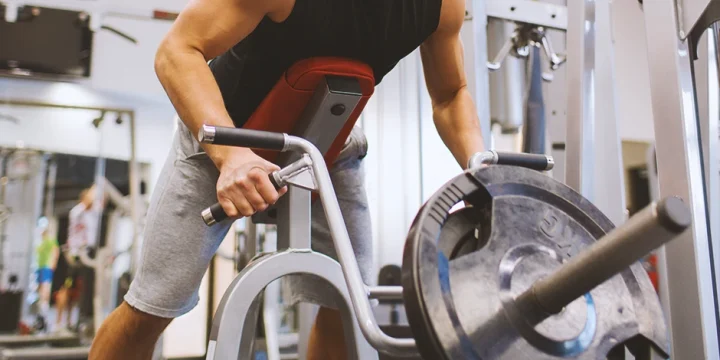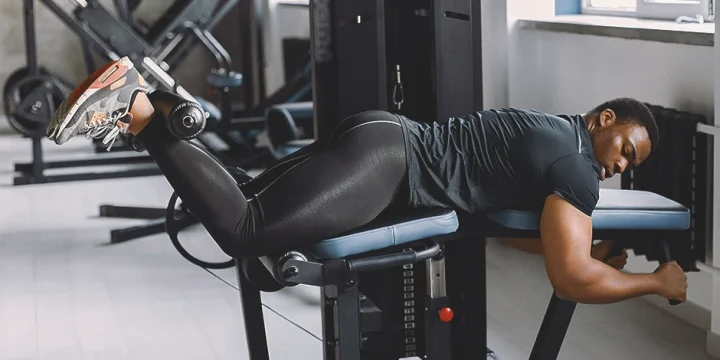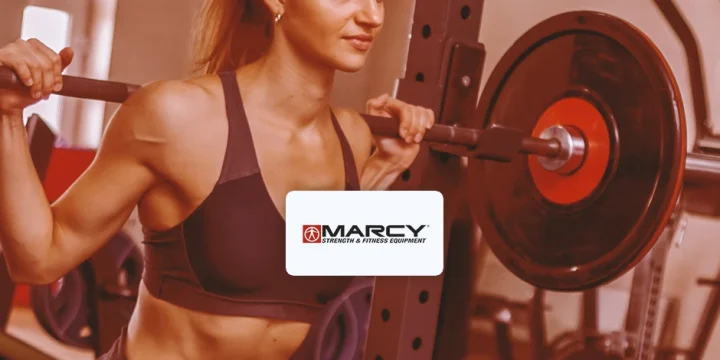The high row machine, also known as the hammer strength high row, is a dynamic compound exercise targeting the shoulders and upper back.
While effective, many seek alternatives due to accessibility or movement issues.
As a health and performance coach with extensive experience, I'll share proven high-row machine alternatives, their muscle impacts, and how to integrate them into your workouts.
Quick Summary
- To effectively substitute the high row machine, choose exercises that replicate its unique shoulder and upper back targeting, like kneeling cable high rows, resistance band high rows, or seated cable rows.
- Among the alternatives, kneeling cable high rows stand out for closely mimicking the high row machine's resistance angle and muscle activation.
- WebMD highlights that exercises like the barbell row, another recommended alternative, not only strengthen upper back muscles but also improve hip hinge and trunk strength.
- In my experience, incorporating alternatives and variations like unilateral high rows or using instability tools like Bosu balls can significantly enhance traditional high row exercises, offering a fresh challenge to the routine.
The High Row Machine Alternatives

In general for an effective high-row machine alternative, select exercises with a pulling angle between a horizontal row and a vertical pulldown, using a neutral or overhand grip.
Ensure your upper arms are near your chest in contraction and angled about 45° from your sides at the movement's end.
Here are the most effective ones:
Kneeling Cable High Row
In my years of coaching, I've found the kneeling cable high row to be the most effective alternative to the high row machine, closely mimicking its resistance angle and muscle activation.
How to perform:
- Kneel a few feet away from the preferred cable machine.
- With your arms outstretched, hold the cable in front of you.
- With your elbows out, pull the cable towards your chest.
- Maintain an erect posture throughout, with your chest up and your stomach tight.
- Slowly stretch your arms to return to the starting position.
- Repeat for the desired number of reps.
Seated Cable High Row
"A seated cable machine row strengthens the back and forearm muscles. It is a fantastic compound workout for improving the middle back while providing practical arm work."
- Ben Mayz, Certified Personal Trainer
The seated cable high row may be included in an upper-body strength program.
How to perform:
- Sit on the platform with the knees bent and hold the cable row attachment.
- Pull the handle and load toward the lower belly, avoiding using the row's momentum by pulling the body backward using your arms.
- Target the middle to upper back by maintaining your back straight and clenching the shoulder blades together as you row, keeping the chest out.
- Return the handle under strain to full stretch, keeping your back straight even if your hips are flexed.
- Repeat for the desired number of reps.
Single Cable Row

Using the single-handle attachment, you may also complete the high cable row while standing.
How to perform:
- Set the pulley to the highest level.
- Grab the handle with a single hand and step back, putting stress on the cable.
- Your hand is stretched in front of you, at or above head level, in the beginning position.
- Pull the elbow backward and down until the handle is near your chest.
- Pause, then return to the beginning position.
- Repeat for the desired number of reps.
Related: How to Do Cable Upright Row
Barbell Row
The barbell row is commonly used to improve and strengthen upper back muscles. Moreover, according to WebMD, this exercise also improves hip hinge and trunk strength [1].
To complete a barbell row effectively, however, it needs the assistance of the upper arm, low back, and core muscles.
How to perform:
- Assume a standing stance with your feet shoulder-width apart and a double overhand grasp on the bar.
- Hinge forward until the body is nearly parallel to (or slightly above) the floor.
- Begin by pushing your elbows behind your body and retracting your shoulder blades.
- Pull the barbell towards your belly button until it makes contact with your body.
- Lower the bar slowly and controllably back to the starting position.
- Repeat until the required number of repetitions has been reached.
Learn more: Best Barbell Exercises to Build Muscle and Strength
Seal Row
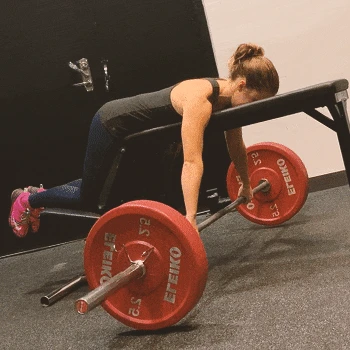
The seal row is a version of the barbell row in which the exertion is concentrated on the rowing muscle groups in the upper arms and back.
This is accomplished by lying on a bench and relieving the legs and core.
How to perform:
- Lie on your stomach on a bench, with a barbell on the floor underneath you.
- Use an overhand grip that is broader than shoulder width.
- Pull the barbell towards you as you inhale.
- Pull the barbell as high as possible, preferably to the underside of the bench.
- Lower the barbell back to the beginning position with control.
- Repeat for reps.
Learn More: Underhand vs Overhand Rows: Which is Right for You
Resistance Band High Row
The resistance band high row works your upper back muscles, particularly the lats.
The secondary muscle groups focused on this movement are the biceps and back shoulder.
How to perform:
- Wrap your favorite home gym resistance band over a quality power rack or pole somewhat higher than your head level.
- Standing straight, take one end of the resistance band with an overhand grip in each hand.
- Exhale and row the arms back towards your torso by forcing your elbows back and pressing the shoulder blades together.
- Row until your hands are close to your chest.
- Inhale and stretch your arms forward to return the resistance band to the starting posture.
- Repeat for reps.
Also Read: How to Do Resistance Band Rows Properly
Rocky Pull-up
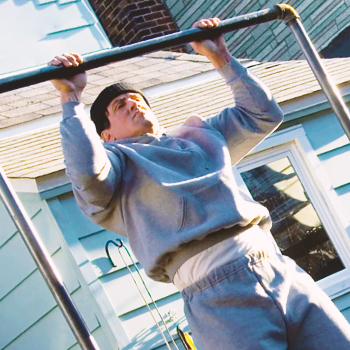
Based on my training sessions, the rocky pull-up is an exceptional total-body calisthenics workout, primarily focusing on the upper back and lats, with added benefits for the shoulders, middle back, and biceps.
How to perform:
- Begin by gripping the pull-up bar with your hands facing each other in the standard pull-up position.
- Lift the chest toward the bar until it contacts it, like a typical pull-up, and compress your back as you move upward.
- Return your body to the beginning position and repeat the exercise, but this time raise the chest with the back of your skull touching the bar and squeeze your back as soon as the neck touches the bar.
- Return to your starting position.
- Repeat for reps.
Read more: Best Pull-Up Bar Exercises of All Time
Muscles Worked by High Row Machine and Its Alternatives

Through my years of training clients, I've observed that while the high-row machine and its alternatives target the same muscles, the variations in movement patterns significantly affect muscle activation.
Teres Minor And Major
These muscles connect the humerus to the scapula, mainly pulling the humerus down [2].
The Latissimus Dorsi
These large side torso muscles extend the shoulder (push down) and adduct it horizontally (pull back) [3].
Michał Słowak, an amateur boxer, notes that the lats contract to keep the scapula against the thorax, aiding in pulling the handle close to the chest.
Rhomboids

Including the rhomboid major and minor, these upper back muscles work with the traps to stabilize the scapula [4].
The Trapezius Muscle
Comprising lower, middle, and upper sections, the traps retract the scapula, preventing it from moving forward during the pull [5]. They provide a stable base for the movement.
Biceps
As the main elbow flexors, the biceps assist in pulling the bar down by flexing the elbow [6].
Programming the High Row Machine Alternatives

The high-row machine activity can be a heavy compound motion used as a primary or secondary source of upper back-developing stimulus.
It may be a light compound workout used as an auxiliary next to more comprehensive or intense back exercises like the deadlift or barbell high row.
For a more challenging variation, try unilateral high rows with increased resistance or incorporate instability elements, such as Bosu balls, to enhance balance and core strength.
"When using an alternative workout that keeps the training stimulus and aspect of the high-row machine movement, incorporating it into your training routine only demands replacing the same role that the high-row machine action previously had."
- Steve Theunissen, Certified Strength & Conditioning Specialist
The high-row machine may generally translate in a 1:1 ratio with the majority of exercises in terms of volume and relative amount of weight, though certain lifts with more beneficial form mechanics may permit you to move heavier weights with less exertion, needing adjustments to maintain the intensity of the training session.
Incorporate the workouts mentioned above into your weekly training session, and employ our best pre-workout supplements for the energy, focus, concentration, endurance, and pump needed to complete your sets and repetitions without having muscle fatigue.
FAQs
Is a High Row Machine Better Than a Low Row Machine?
Both high and low-row machines are beneficial. The low row is a better option if you want to focus on your lats. If you want to develop more mid-trapezius and rhomboids, the high row machine workout is the movement to perform.
What Are the Benefits of Machine High Row?
The benefits of machine high rows include training a lot of muscle mass and allowing for heavy loads. It is a compound exercise whose movement occurs at the shoulder and elbow and trains the back muscles and biceps.
What Can I Use Instead of Row in CrossFit?
Instead of the row, you can use heavy bag work, weighted stair climbing, dumbbell or kettlebell swings, and box jumps in CrossFit. Sumo deadlift high pulls can also take the place of a high-row machine.
References:
- https://www.webmd.com/fitness-exercise/how-to-do-barbell-row
- https://www.ncbi.nlm.nih.gov/books/NBK580487/
- https://www.ncbi.nlm.nih.gov/books/NBK448120/
- https://pubmed.ncbi.nlm.nih.gov/30521277/
- https://www.ncbi.nlm.nih.gov/books/NBK518994/
- https://www.ncbi.nlm.nih.gov/books/NBK519538/
About The Author
You May Also Like
